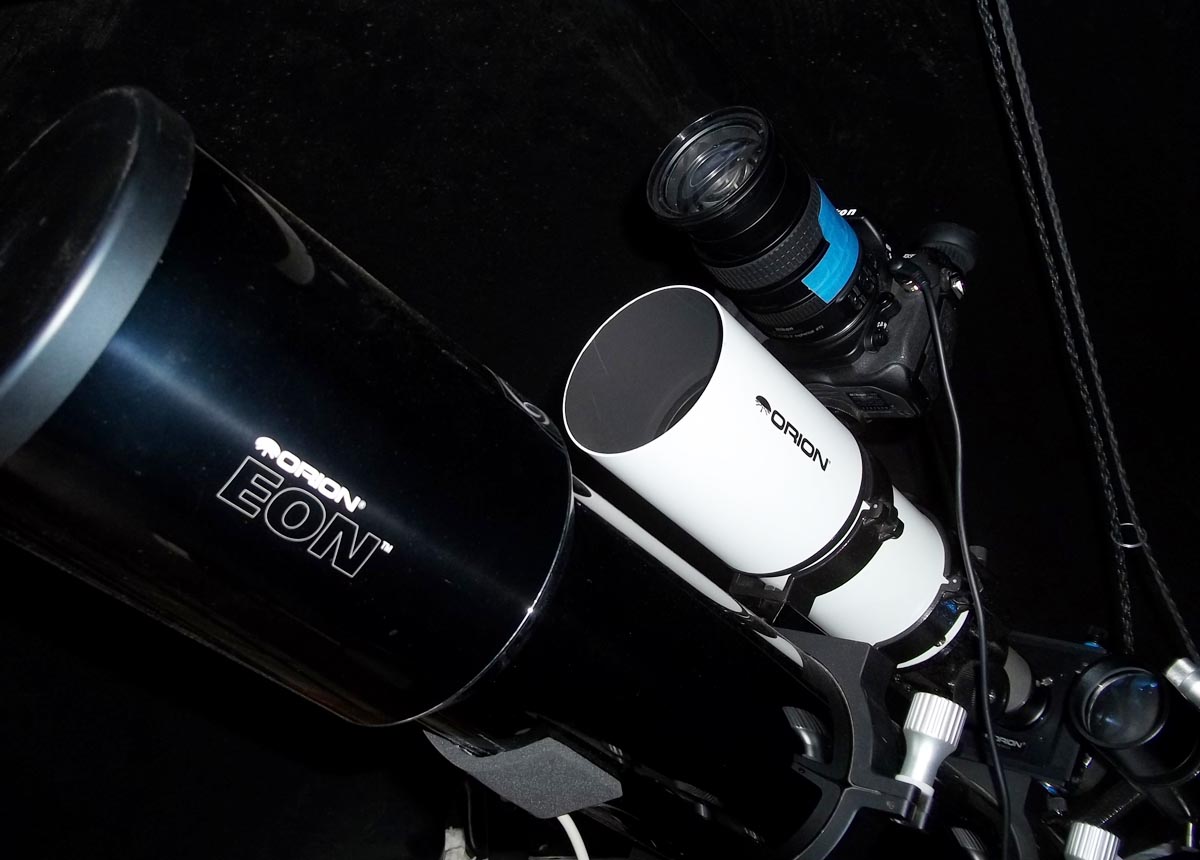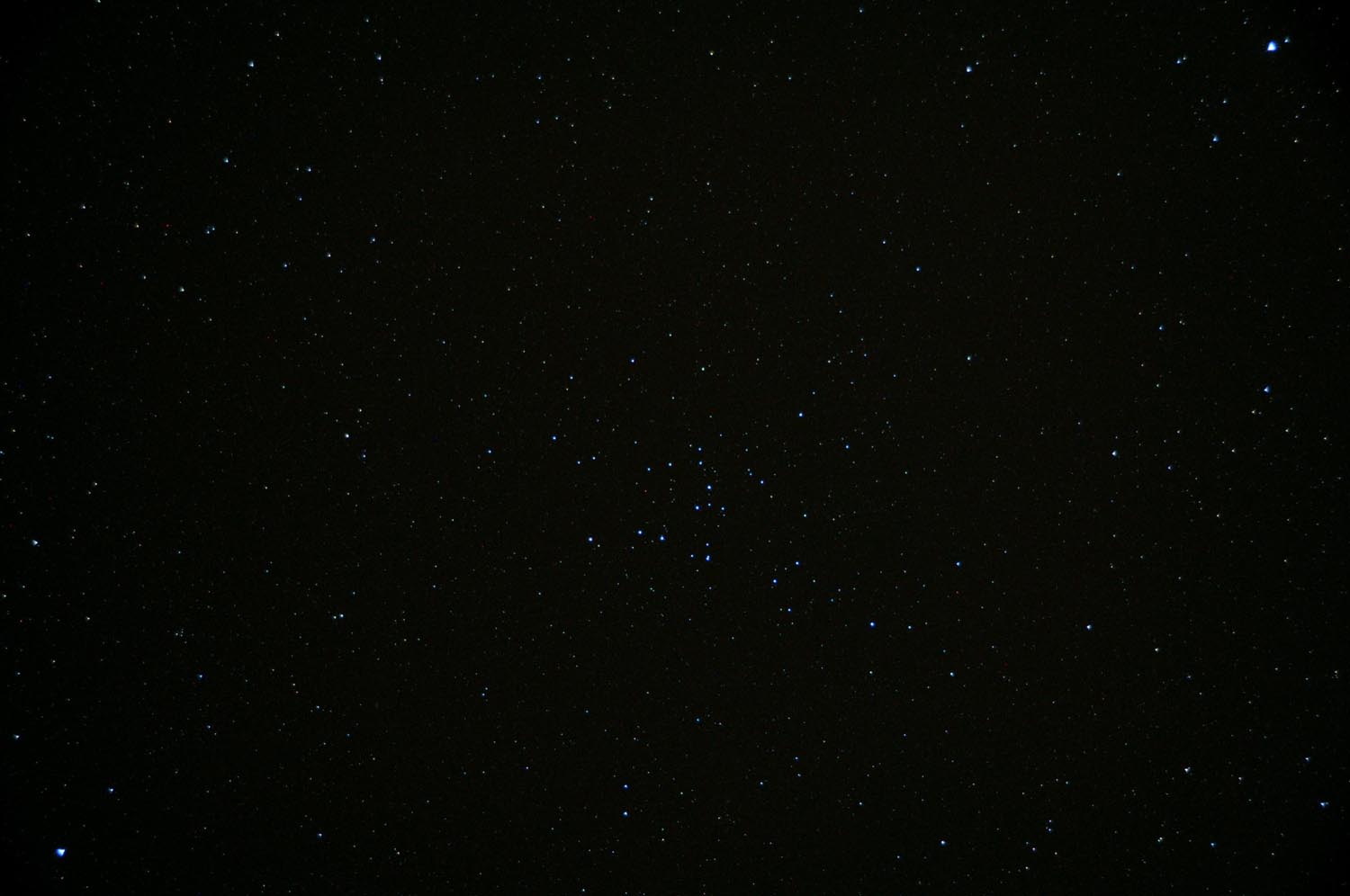
 | SOCO Blog |
13 May 2015
CAPTURING THE COMA CLUSTER
It's no secret that I really like open clusters. In an earlier blog entry, I presented recent images of some very lovely open clusters in the constellation Auriga. Even when viewed visually through the telescope, open clusters look like sprays of diamonds scattered across the black velvet of the sky. When I was just a kid, one of the earliest astronomical objects that I can remember viewing through my brother's small telescope was M 7 in Scorpius. May was a very important time of the year when I was young— not only did it mark the end of school and the start of summer vacation, but also its warm nights allowed leisurely astronomical viewing. And at this time, one of the most interesting objects was situated almost directly overhead, making it easy to observe while lying down on a blanket in the back yard of my home. This was the open cluster in the constellation Coma Berenices ("Queen Berenice's Hair"). At the time, I wasn't as much interested in the constellation as I was the cluster, so "Coma Berenices" to me just meant the cluster. I knew it was a cluster of stars because it said so in my copy of "The Golden Guide to Stars" by Herbert S. Zim (St. Martin's Press, New York), the small handbook that was my introduction to astronomy. While you could sort of see the stars making up the cluster with your naked eye, binoculars showed the cluster in all its glory.
Now that I'm "grown up" and have thousands of dollars worth of astronomical equipment, the question occurred to me, "How can I image the Coma Cluster so that it has an appearance something like when I used to observe it as a kid?" The Coma Cluster (also known as Melotte 111) is big— around 7.5 degrees across— way too big to fit in the SOCO main scope, or even the smaller autoguiding scope. I could set up my digital SLR on a tripod and shoot it, but that would limit me to reletively short exposures (around 30 seconds or less) due to the motion of the stars across the sky.
The solution was to use my thousands of dollars worth of astronomical equipment as simply a platform to carry the digital SLR. As shown in Figure 1, the Nikon D300 digital camera with its Nikkor 18-300 mm ED telephoto lens was attached to the top of the SOCO 80-mm autoguiding telescope in line with the other scopes. Fortunately, the front attaching ring for the autoguiding scope has a screw mounting adapter already afixed atop it for this purpose. Once attached, the camera could be put in "B" ("bulb") mode and fired using a locking cable release. The blue painter's tape on the lens keeps it focused at infinity, and also keeps its focal length set at 50 mm. With this setup, I could use the autoguider to track the cluster across the sky and make as long an exposure as I desired with the piggybacked SLR.

Figure 1. The Nikon D300 digital SLR mounted piggyback on the SOCO telescopes.
The result is shown in Figure 2. This is a 4-minute exposure containg the star field from Cor Caroli in Canes Venatici to Denebola in Leo, centered on the Coma Cluster. The same star field is shown in the maps in Figure 3. The image was processed in Adobe Photoshop to remove the sky background illumination. The autoguiding produced compact, sharp stellar images for the cluster, although some distortion in the shapes of the stellar images for Cor Caroli and Denebola is apparent near the corners of the image.

Figure 2. The star field from Cor Caroli (bottom left) to Denebola (top right), including the Coma Cluster.

Figure 3. (Left) Map showing the star field from Cor Caroli to Denebola, including the Coma Cluster; (Right) same map with labels.
Source: Cartes du Ciel.
The rendition of the cluster in Figure 1 is comparable to the view with binoculars. The Coma Cluster contains around 80 stars, 40 of which are 10th magnitude or brighter. The brightest member is γ (= 15) Comae Berenices, at a magnitude of 4.35 (visual). The cluster lies at a distance of around 280 LY, which is about twice as far as the Hyades cluster that makes up the face of Taurus, the bull. The Coma Cluster is also fairly old, at around 450 MY.
Of course, the Coma Cluster's shimmering appearance is related to how it got its name. As described by Richard H. Allen in his classic book "Star Names" (Dover Publishers, New York), the constellation is named for Queen Berenice II, wife of Ptolemy III of Egypt. When the king went off to war, Queen Berenice was so concerned that she offerred to sacrifice her flowing hair to Aphrodite for his safe return. After he did return, she cut and placed her hair as promised on the altar in the temple of Aphrodite in Zephyrium. But the locks disappeared from the temple. To ease the concerns of the king and queen, Conon of Samos (the royal astronomer) claimed that the gods so liked the offering that they placed the hair in the heavens for all to see. And he could point to the shimmering assemblage of tiny stars as proof.
The Coma Cluster was associated with hair even before the origin of Berenice's story. It had previously been considered as the tuft of fur on the end of the tail of Leo, the lion, which precedes it across the sky. The star cluster was included in Giovanni Batista Hodierna's catalog of objects published in 1654. In this catalog, Hodierna classified the Coma Cluster as a Luminosa, i.e., an object which could be seen to contain stars with the naked eye.
You don't always need a big telescope or fancy imaging system to appreciate the beauty of astronomical objects. Diamantine assemblages of stars, like the Coma Cluster, the Pleiades, the Hyades, and the Alpha Persei Group are there set high in the sky for all to see and enjoy.
 Return to SOCO Blog Page
Return to SOCO Blog Page
 Return to SOCO Main Page
Return to SOCO Main Page
Questions or comments? Email SOCO@cat-star.org